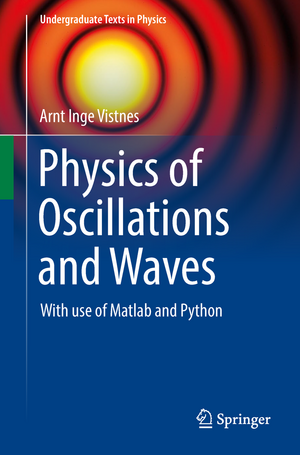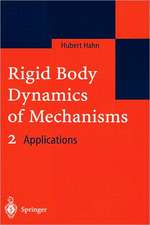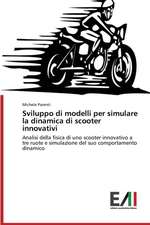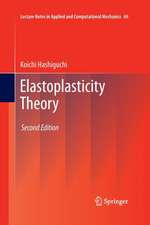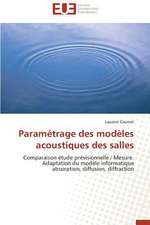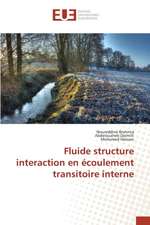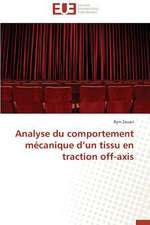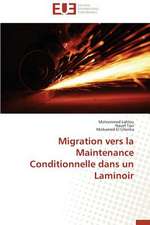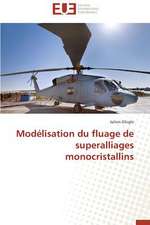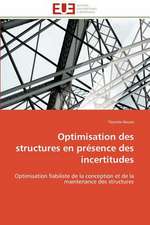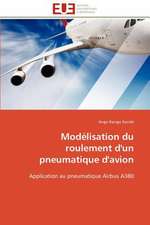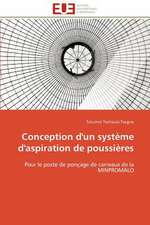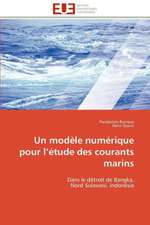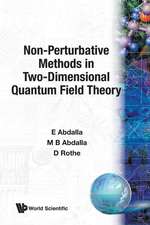Physics of Oscillations and Waves: With use of Matlab and Python: Undergraduate Texts in Physics
Autor Arnt Inge Vistnesen Limba Engleză Paperback – 31 aug 2018
Preț: 513.83 lei
Preț vechi: 604.51 lei
-15% Nou
Puncte Express: 771
Preț estimativ în valută:
98.33€ • 102.28$ • 81.18£
98.33€ • 102.28$ • 81.18£
Carte tipărită la comandă
Livrare economică 12-26 aprilie
Preluare comenzi: 021 569.72.76
Specificații
ISBN-13: 9783319723136
ISBN-10: 3319723138
Pagini: 565
Ilustrații: XVIII, 576 p. 273 illus., 257 illus. in color.
Dimensiuni: 155 x 235 x 40 mm
Greutate: 0.82 kg
Ediția:1st ed. 2018
Editura: Springer International Publishing
Colecția Springer
Seria Undergraduate Texts in Physics
Locul publicării:Cham, Switzerland
ISBN-10: 3319723138
Pagini: 565
Ilustrații: XVIII, 576 p. 273 illus., 257 illus. in color.
Dimensiuni: 155 x 235 x 40 mm
Greutate: 0.82 kg
Ediția:1st ed. 2018
Editura: Springer International Publishing
Colecția Springer
Seria Undergraduate Texts in Physics
Locul publicării:Cham, Switzerland
Cuprins
Chapter 1: Introduction.- Chapter 2: Free and damped oscillations.- Chapter 3: Forced oscillations and resonance.- Chapter 4: Numerical methods.- Chapter 5: Fourier analysis.- Chapter 6: Waves.- Chapter 7: Sound.- Chapter 8: Dispersion and surface waves on water.- Chapter 9: Electromagnetic waves.- Chapter 10: Reflection, transmission and polarization.- Chapter 11: Measurements of light, dispersion of light, colours.- Chapter 12: Geometric optics.- Chapter 13: Interference, diffraction.- Chapter 14: Wavelet transformation.- Chapter 15: Coherence, dipole radiation and lasers.- Chapter 16: Skin depth and wave guides.
Notă biografică
Arnt Inge Vistnes is an Associate Professor in the Department of Physics, University of Oslo, Norway, which holds a unique position in the use of numerical methods within physics education. Dr. Vistnes was the first in the department to start using numerical methods on basic physics bachelor courses, in 1997, and accordingly has long experience in the ways in which numerical methods can improve understanding of physics. He has an excellent reputation for his teaching ability and has won several prizes for good teaching. Dr. Vistnes first wrote Oscillation and Wave Physics in Norwegian to meet the need for a textbook suitable for fourth semester physics bachelor students. He has subsequently improved and added to the text and is personally responsible for most of the more than 250 illustrations in the book.
Textul de pe ultima copertă
In this textbook a combination of standard mathematics and modern numerical methods is used to describe a wide range of natural wave phenomena, such as sound, light and water waves, particularly in specific popular contexts, e.g. colors or the acoustics of musical instruments. It introduces the reader to the basic physical principles that allow the description of the oscillatory motion of matter and classical fields, as well as resulting concepts including interference, diffraction, and coherence. Numerical methods offer new scientific insights and make it possible to handle interesting cases that can’t readily be addressed using analytical mathematics; this holds true not only for problem solving but also for the description of phenomena. Essential physical parameters are brought more into focus, rather than concentrating on the details of which mathematical trick should be used to obtain a certain solution. Readers will learn how time-resolved frequency analysis offers a deeper understanding of the interplay between frequency and time, which is relevant to many phenomena involving oscillations and waves. Attention is also drawn to common misconceptions resulting from uncritical use of the Fourier transform. The book offers an ideal guide for upper-level undergraduate physics students and will also benefit physics instructors. Program codes in Matlab and Python, together with interesting files for use in the problems, are provided as free supplementary material.
Caracteristici
Uses both mathematics and numerical methods to give physics students insights not offered by traditional physics teaching Rectifies misconceptions on many matters, even including how musical instruments work Discusses the interesting interplay between time and frequency more deeply than most textbooks
